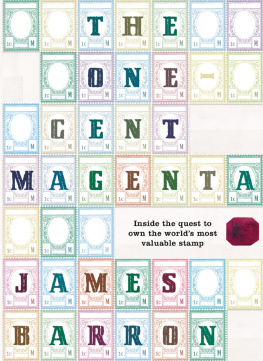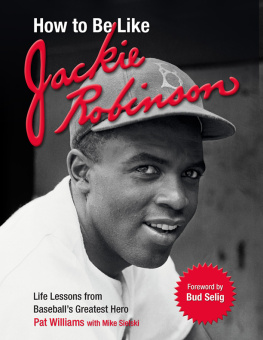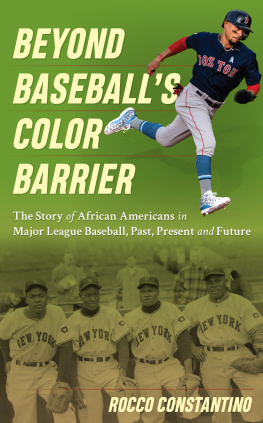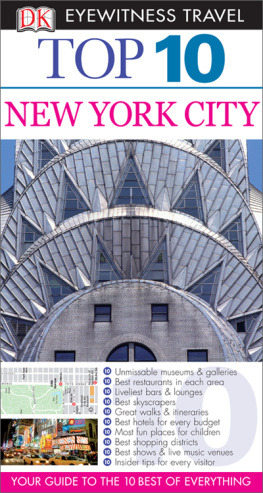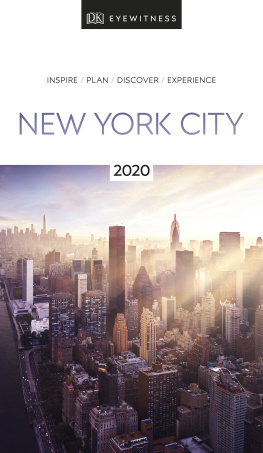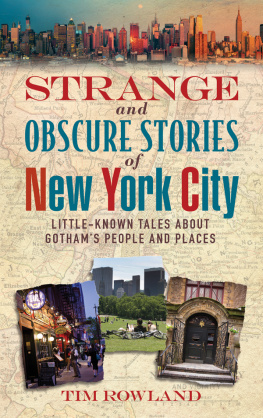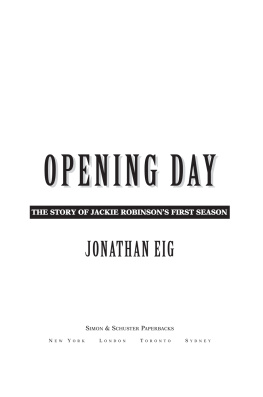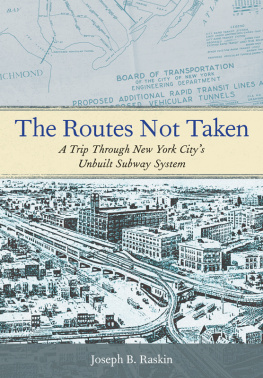New York City has been written about, sung about, and talked about in every way imaginable, but there is no better single record of its many splendors than The New York Times. Meyer Berger, Gay Talese, Brooks Atkinson, Frank Rich, Ada Louise Huxtable, John Kieran, William Grimes, Jennifer 8. Lee, McCandlish Phillips, Clyde Haberman and hundreds more of the newspaper legends represented in the pages of this book have been recounting the major events, everyday lives, dynamic culture and off-beat treasures of the city for more than 150 years.
This engrossing collection brings together the expected and unexpectedoften on the same page. From Olmsted and Vauxs winning 1858 design for Central Park to the depressed polar bear at the Park Zoo; from Ruth Reichls memorable review of Le Cirque to the family feud at Zabars; from the day Joey Gallo was shot on Mulberry Street to the day the subway hero jumped on the tracks to save another mans life; from the building of the Chrysler building to the mission to save the Moon-struck house in Brooklyn Heights; from when the Dodgers left Brooklyn to the 2000 Subway World Series; plus profiles of New Yorkers like Martin Scorsese, Colson Whitehead, Phil Rizzuto, Eleanor Roosevelt and much more, the book is both historical and modern, at times serious and funnyan altogether fascinating new perspective on New York.
Browsable and fully illustrated with recent and archival photographs from The Timess own collection, the book touches on all topics related to New Yorkpeople, transportation, architecture and parks, arts and leisure, business, politics and government, crime, disasters, food, sports and neighborhoods.
Whether youre a lifelong New Yorker or youve never been, The New York Times Book of New York is a compelling look at the worlds greatest city as seen through the eyes of its most respected journalistsand as recorded on the pages of its most storied newspaper.
The New York Times
Book of New York
549 stories of the people, the events and the life of the citypast and present
Edited by
james barron
Introduction by
anna quindlen
Supervising Editor
mitchel levitas

Copyright 2009 The New York Times
All rights reserved. No portion of this book may be reproducedmechanically, electronically, or by any other means, including photocopyingwithout written permission of the publisher.
Published by:
Black Dog & Leventhal Publishers, Inc.
151 West 19th Street
New York, NY 10011
www.blackdogandleventhal.com
Distributed by:
Workman Publishing Company
225 Varick Street
New York, NY10014
Cover design by Liz Driesbach
Cover Image: CORBIS, Photographer Samuel Gottscho
ISBN-13: 978-1-60376-369-1
Library of Congress Cataloging-in-Publication Data available on request.
A Note to Readers
In his Foreword to a selection of Joseph Mitchells articles, mostly from The New Yorker, his colleague Calvin Trillin wrote that after Mitchell knew the citys grim specifics as a police reporter, and even after he knew it as an acknowledged master of its neighborhoods, he never lost an out-of-towners sense of wonderment.
That was our goal in choosing these articles, all but a handful by staff writers for The New York Times, from among the millions of articles about its own city that The Times has published over the years: to create a kaleidoscopic portrait of New York that residents, recent immigrants and visitors would find spontaneous and surprising, informative but not encyclopedic, and subjective but broadly inclusive. If we have come reasonably close to that goal, it is because Times reporters and editors have provided the skill and the judgmentday after day and year after year since the papers founding in 1851to make a collection like this possible.
That said, the pages here contain, for the most part, excerpts of the articles that appeared in The Times. Even in a book as thick as this one turned out to be, the available space was limited, and we had to give many of the stories a trimbut not, we believe, a buzz cut. We worked as carefully as possible to cut as few words as possible. We did very little rewriting or condensationthe words you will read here are largely the words that appeared in The Times on the dates indicated. We did take some liberties with deleting time elements like yesterday in passages where they seemed unnecessary in a book like this, published so long after the morning after the events described in the stories. We also rewrote some of the headlines to fit into the space available in the format of the book. But that is in keeping with what the copy editors who wrote the original headlines did in the first place: they were writing to fit the layout of a particular page. In all cases, we did our best to preserve the essence of what was originally published in The Times.
Chief among our partners in the effort are the writers and photographers whose work is gratefully represented here. Among the publishers stalwarts, we are indebted to Lisa Tenaglia for indispensible, imaginative research into a mountain of newspaper clippings; Liz Van Doren for her editorial insight; Susie Tofte for her researchall under the guidance of J.P. Leventhal, the publisher. For The Times, we thank Alex Ward, editorial director of the book development program, for his continuing support; Phyllis Collazo, Ryan Murphy and Jeffrey Roth for their expertise in locating archival photos; and Tomi Murata for her managerial touch.
CONTENTS
Introduction
By ANNA QUINDLEN
O NE SPRING AFTERNOON YEARS AGO I STOOD on a Manhattan corner peering at a street map, miming confusion. The experiment was part of a story; the point to count how many New Yorkers would stop to offer advice or assistance to what looked like a befuddled tourist. In an hour there were 21, unless you count the man in rags who bellowed Gimme some change and spit extravagantly at my feet when I ignored him.
New York City is everything people say it is, and everything they persist in believing it is not.
New York City is everything people say it is, and everything they persist in believing it is not. Its passersby who look locked in a Lucite box of indifference, and those who will snap out of it in a second if you really seem to need help. Its a city of faceless glass-and-steel monoliths and a village of single-family houses and volunteer school safety patrols. Its places to eat where the tab defies belief, and corner falafel stands with a line down the street at lunchtime. Its tough and its friendly and its terrifying and its homey. From the shores of Staten Island to the northernmost reaches of the Bronx, its more or less everything, sometimes all on the same block.
And because of that it can be the easiest city in the world in which to be a reporter and writer. For three years I wrote a column for the New York Times called About New York, which is perhaps the best gig in daily journalismtwo columns a week about anything you want, anywhere in the five boroughs. When, occasionally, the ideas evaporated, when there was no firehouse closing or hot dog-eating contest to investigate, I knew exactly what to do. I rode the subway to a random stopRockaway Boulevard, Parkchesterand began to walk. (Once, when I was expecting my first child, a patrol car followed me around a dicey area of Brooklyn, because, the cops said, it would be a real mess if a pregnant reporter was mugged on their patch.) Trust me: within a 15-minute walk of any subway stop in New York there is a beauty salon with a proprietor who has stories to tell, or a community garden with volunteers who cant wait to have someone notice their urban zucchini, or a playground with moms who have a bone to pick about the school system, or simply a bus stop with a sampling of New Yorkers. The benches along the boardwalk in Coney Island were my lodestone, filled with elderly men who knew the story of the city better than some historians; I had only to take a notebook and a pen from my bag, and the world, or at least a detailed and richly remembered part of it, was mine.
Next page

